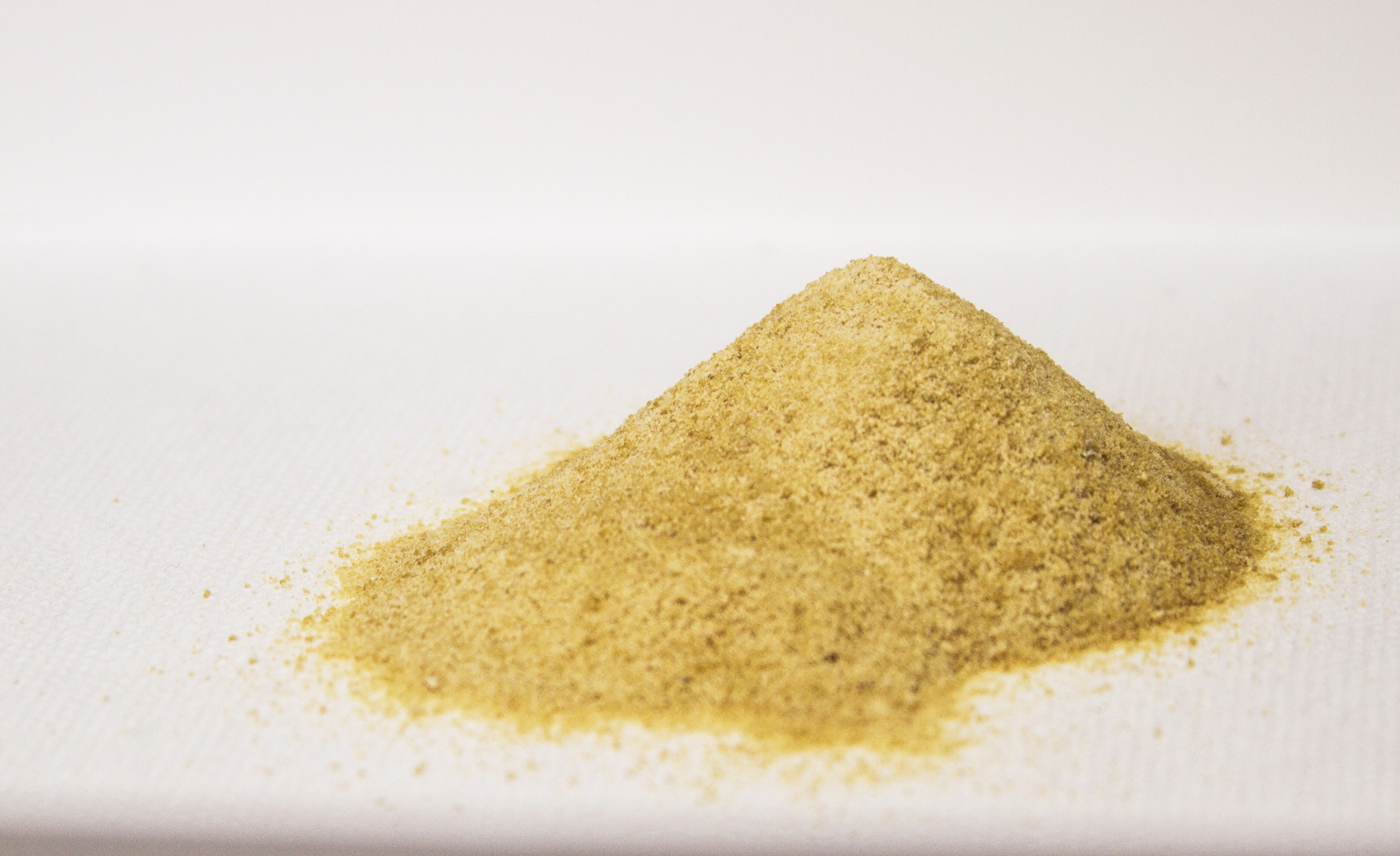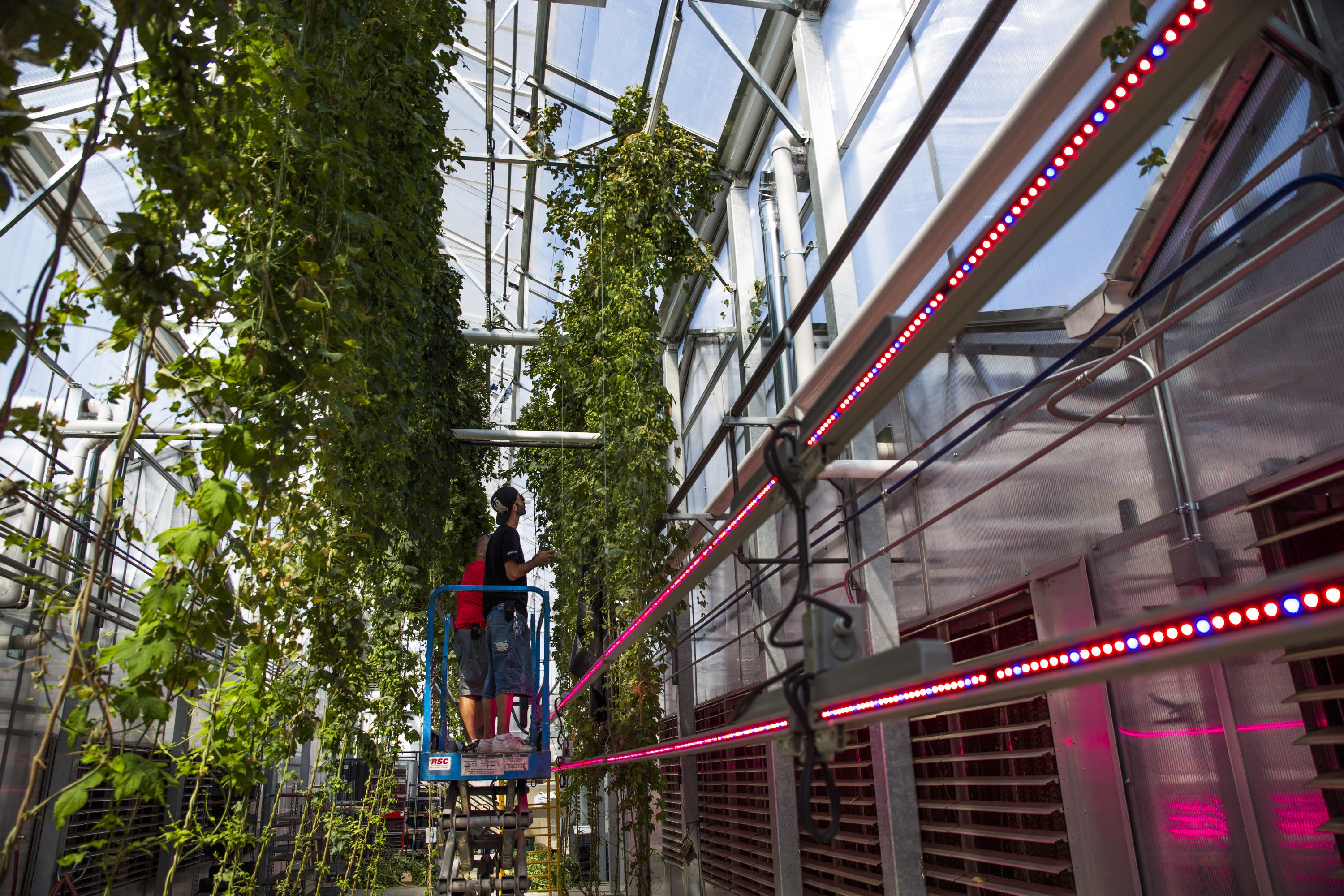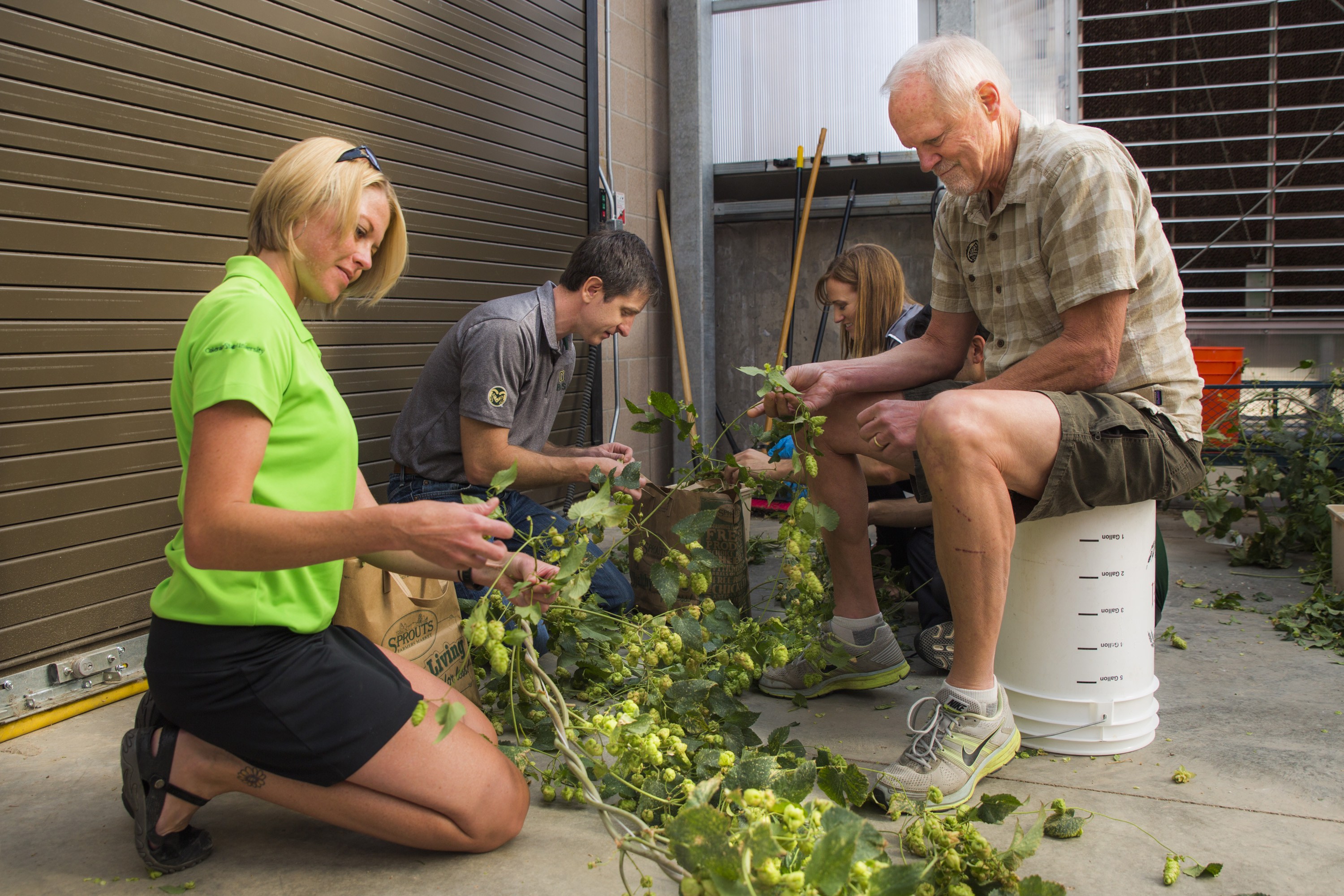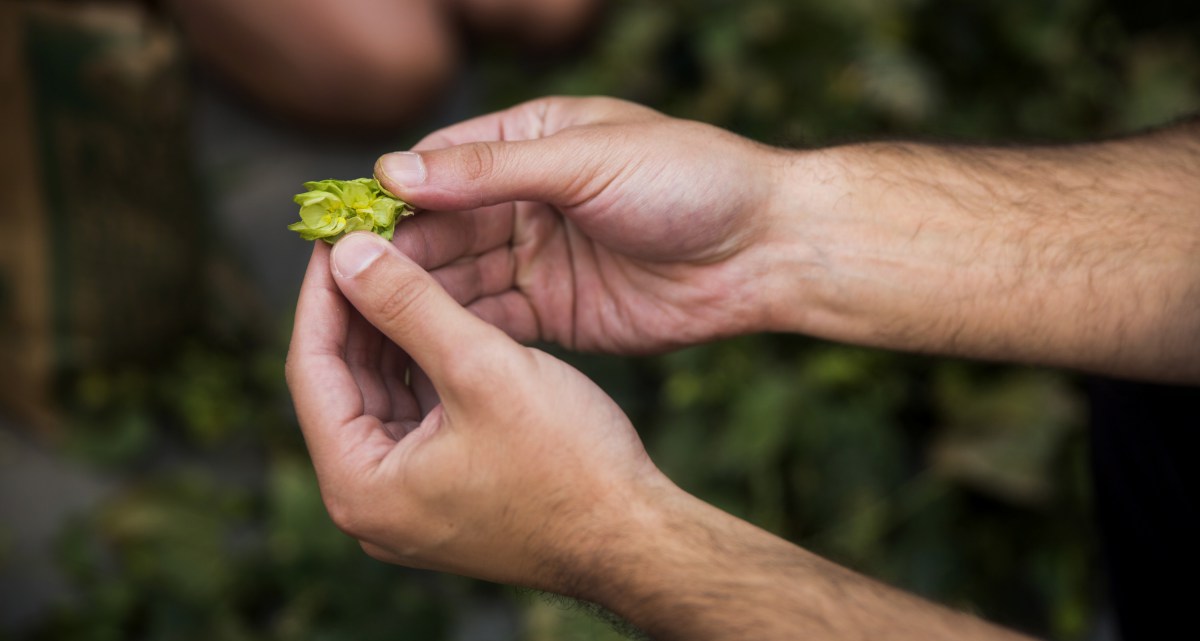CAN MUSHROOMS MAKE A LESS BITTER BEER?
In a nondescript strip mall in suburban Aurora, Colorado, a start-up company called MycoTechnology is brewing a potion to make foods taste less bitter. In one room, an opaque beige liquid churns inside glass flasks on a lab shaker. The liquid contains mycelia, threadlike fungi that form mushrooms in forests. MycoTechnology grows the organisms on Petri dishes, then in flasks, and eventually in large steel bioreactors, much like the tanks used for fermenting beer. After a few days, the contents are filtered, sterilized, and sprayed dry into a concentrated beige powder.
The resulting product, called ClearTaste, contains a series of molecules that temporarily stick to taste receptors on the tongue and block the perception of bitterness, says Pete Lubar, the company’s chief operating officer. Lubar says that ClearTaste seems to be effective when added in tiny quantities to a variety of foods, including alcohols, grains, fruit juices, ginseng, and the natural sweetener stevia. “People from all over the world now are sending us their nasty flavors, and we’re able to mitigate those flavors,” he says. It can be used to curb naturally bitter tastes and to drastically slash sugar in products where sweeteners are used to mask unpleasant aftertastes and off-notes. Crucially, because it’s made by mushrooms, it can be added to foods labeled natural and organic. It’s one of the reasons the company pulled in almost $10 million in funding last year.
Humans have a complex and fascinating relationship to bitter tastes. On one hand, blocking bitterness is a long-sought goal of the commercial food industry; from a marketing standpoint, bitterness is a turnoff. On the other hand, bitterness also adds complexity to our palate. Bitter tastes are something we learn to appreciate and are often considered a sign of sophistication (green vegetables, coffee, dark chocolate, alcoholic drinks, and other “grown-up” foods are bitter). So why do we try to erase them?
I came to MycoTechnology’s facility to taste for myself. I don’t mind a little bitterness; I eat kale salads and broccoli rabe, and my favorite cocktail is a Campari and soda. But there’s one bitter substance that I find tough to swallow: India pale ale. As much as my craft beer enthusiast friends encourage me, I can’t embrace the intensely hoppy beers that are so fashionable these days. I don’t reach for beers much, and when I do, I want something refreshing to quaff on a summer afternoon—something easy, not challenging.
So I sat down at a conference table while Josh Hahn, the company’s marketing manager, opened a bottle of locally brewed Breck IPA and poured a small amount into a paper cup. I sipped its foamy top and tasted a familiar twang that made my mouth tighten into a frown. Hahn then emptied a dropperful of a flavorless yellowish liquid containing ClearTaste dissolved in water into my beer and I sipped again. Surprisingly, the beer tasted smoother and milder. Hahn added another dose. The aftertaste was gone. It was like the volume has been turned down; I even detected a faint hint of sweetness in the beer. The product had reduced the fearsome IPA to something more like a mild lager. While IPA lovers might be horrified, I had to admit that this milder version was more my style.

THE EVOLUTIONARY ADVANTAGE OF BITTER
Bitter tastes are inherently repellent to humans. Julie Mennella, a biopsychologist at Monell Chemical Senses Center, says that newborns will make a face when given a bitter-tasting substance, but they seek out sweetness. She says it makes sense from an evolutionary perspective: Sweetness signals that a food has calories, which babies need to survive. Bitterness, on the other hand, is a “signal of toxins,” Mennella says. Plants produce toxic and noxious-tasting compounds to avoid being eaten; in turn, we have developed a keen sense for their bitter tastes to avoid being poisoned.
This evolutionary tug-of-war between plants and people may also explain why, out of our five known tastes—bitter, sweet, salty, sour, and umami—bitter is the most complex. “Our understanding of bitter taste perception has really been revolutionized in the last 13 or 14 years,” says John Hayes, a food scientist at Penn State University. We now know that humans have 25 different genes responsible for our bitterness receptors—the tiny proteins on our taste buds that allow us to sense bitter compounds in foods. Sweetness, in contrast, involves just two genes that form a single receptor. This diversity helps us sense the wide variety of bitter tastes—and toxins—in our wide-ranging diet. The number of compounds we perceive as sweet is perhaps 10 or 20, Hayes says, while bitter compounds number in hundreds to thousands.
But while many toxic substances are bitter, not everything bitter is toxic. In fact, some of the bitter-tasting compounds in our diet happen to be good for our health, such as plant proteins and phytonutrients like isoflavones, phenols, and flavonoids, often studied for their antioxidant and disease-blocking effects. That’s where bitter blockers come in. Flavor manufacturers, such as the California-based company Senomyx, has developed synthetic bitter blockers by screening for compounds that directly interfere with specific bitter receptors on our tongues and in our mouths. But while companies have worked for decades on the problem using sophisticated chemical analyses, Peihua Jiang, a molecular neurobiologist at Monell, says that the diversity of bitter receptors on the human tongue makes it hard to block them effectively. “Even if you find a blocker for a particular receptor, a bitter-tasting compound may activate other receptors,” he says.
MycoTechnology began with a different approach: growing mushrooms directly on foods like coffee and cacao, where the fungi feed on bitter compounds, leaving a smoother-tasting product behind. That technology is still part of the company’s portfolio. But then they had, as Hahn describes it, a “happy accident.” They happened to try mixing powdered mycelia with stevia, and discovered that a particular strain of mycelia produces a product that, when added to foods, actually blocks the perception of bitterness in the food, without needing to get rid of bitter compounds themselves. MycoTechnology is still trying to figure out exactly how their product works and which receptors it targets. But it seems to be a far more universal blocker than others on the market. GLG Life Tech Corporation, a Canadian stevia manufacturer, is adding ClearTaste to stevia to reduce the sweetener’s bitter aftertaste. Brian Meadows, president of GLG, says that stevia-sweetened products often need some sugar to mask that aftertaste; this product would allow health-conscious food products such as diet drinks and yogurts to use less sugar. GLG is also using it to make pea protein—an additive to boost the protein level of foods—taste less pealike.
Bitterness may be a biological warning sign, but that’s only part of the story. A handful of our 25 bitter receptor genes come in different common variants. The variants of one bitter receptor gene you inherit, for instance, determine whether you perceive grapefruit as mostly bitter, mostly sweet, or a balance of sweet and bitter. So from birth, we inhabit different worlds in the way we perceive the bitterness in our foods.
But biology isn’t destiny. Most of us learn to tolerate and even like certain bitter foods when we’re young; Mennella says it may take 8 to 10 exposures to get babies to accept vegetables. Most of us initially disliked the taste of coffee and alcohol, both of which are bitter. But if we want to get buzzed or tipsy, we get over it, and even come to love these flavors.
We also live with bitterness by masking it with other tastes, something humans are adept at. The milk and sugar in a caramel mocha makes the coffee’s bitterness effectively moot, and it’s hard to notice the alcoholic bitterness in a strawberry daiquiri. It’s no coincidence that bitter Brussels sprouts have become popular just as restaurants began serving them with a heavy helping of maple syrup and bacon.
However, in some contexts, bitterness itself can be prized—not just tolerated, blocked, or sweetened and salted away. “For a reason we don’t completely understand, humans frequently come to like things that are innately negative,” says Paul Rozin, a psychologist at the University of Pennsylvania. “We do all sorts of things that you’d think we would avoid.” Riding roller coasters, watching sad or scary movies, eating hot chile peppers, or drinking superbitter beers can all be considered “hedonic reversals,” experiences in which something seemingly painful becomes pleasurable.
Rozin calls this whole set of experiences “benign masochism,” and he theorizes that we get pleasure when our brain tells us an activity is dangerous, yet we know it’s safe.

BUILDING A BETTER BITTER BEER
While MycoTechnology is working to eliminate bitterness, just outside its doors in Colorado lies a thriving craft beer industry where a love of bitterness surely reaches the level of benign masochism. Colorado, like much of the country, is hungry for hops, part of a nationwide craze for this intensely bitter plant essential to beer-making. Hops production and prices are rising, and craft breweries release IPAs with ever-higher IBU scores (International Bitterness Units, a gauge of a beer’s bitterness).
In a greenhouse on the Colorado State University (CSU) campus in Fort Collins, I stood on a hydraulic lift and ascended to the ceiling 20 feet up, through a thicket of twisting vines of the hop plant, Humulus lupulus. With me was Bill Bauerle, a tan, sandy-haired horticultural professor. Hops are usually grown in fields, but Bauerle grew these vines hydroponically from buckets filled with small volcanic pebbles. Black hoses carried frequent microdoses of water and nutrients to the vines from a tank at one end of the room. Strings of LEDs bathed the vines in two types of light: red lights to promote photosynthesis and blue light to encourage the plants to open pores, called stomata, on their leaves.
Most American hops are grown in the Pacific Northwest, but Colorado is among several states boosting their local hops-growing capacity. Bauerle hopes to take that idea a step further. Right now he’s studying the best conditions for growing hops indoors; once he works out the science, he hopes to commercialize the approach.
Before we descended to the ground, I pulled off one of the cones, the female flower of the plant. It had a familiar smell: bright, grapefruity, with a hint of skunkiness, betraying the plant’s close genetic similarity to marijuana. I pulled the floret open to reveal yellow powder: lupulin glands, a unique structure in hops that are packed with essential oils and alpha and beta bitter acids.
The hoppy, bitter IPA is the most recognizable beer of the craft brewery movement. Its bold flavor, coming after decades of easy-drinking beers, was the equivalent of hearing the howl of an electric guitar after an era of big-band jazz. But the IPA has a long history; it was popularized by the East India Company in colonial Britain, the acidic hops helping to kill bacteria and prevent spoilage on long journeys. Bauerle is growing four particularly bitter varieties of hops characteristic of IPAs: Centennial, Cascade, Columbus, and Chinook. “I enjoy an IPA that will really wrench your tongue,” he said.
The day I visited, a group of university students and staff members were picking 20 pounds of these fresh hops to brew a special locally sourced beer for CSU’s business school’s 50th anniversary. Picking fresh hops in the middle of the summer is unusual; hops are a seasonal crop, traditionally harvested once a year in the fall (Oktoberfest originated as a celebration of the hops harvest). In contrast, this is Bauerle’s fourth harvest since he began the project in January. His plants, he said, grow up to 10 times faster than they do in fields; he’s seen vines grow 2 inches in a couple of hours.
I spent the next day at nearby Odell Brewing Company watching Doug Odell, the wiry, white-haired owner of the company, lead a group of students in CSU’s fermentation science program through the beer brewing process. The CSU students took turns perching on a keg and stirring the mash, a hot churning blend of malted barley and wheat, with a canoe paddle. As the liquid heated, enzymes converted starches in the grains into sugars. Eventually, the liquid was drained out into another steel tub, called the lauter tun. Jeff Callaway, the bearded associate director of CSU’s fermentation science program, handed me a cup of wort, the liquid left over. It tasted like a sweetened liquid cereal; appealing, but almost cloyingly sweet.
“Beer’s just not palatable without bittering,” said Callaway. Before hops became widely used in Europe, beers in the Middle Ages were brewed with cinnamon, sage, and other herbs and spices to add bitterness.
Once the grains were filtered out, CSU student Luke Bagnall shook a bucket filled with what looked like rabbit food into the now-boiling wort; they were processed hops pellets, which are boiled in the liquid to add bitterness to beer. Later, the more expensive and precious fresh hops from Bauerle’s greenhouse were added to the liquid to be soaked, not boiled. This stage is called dry hopping, a specialty process that pulls out the flavors and aromas lurking in the lupulin glands. With hops, Callaway explained, “a lot of things come along with the bitterness.”
It’s this bigger package of tastes, flavors, and aromas that explains the appeal of bitter plants. Linda Bartoshuk, a sensory psychologist at the University of Florida, says that volatile chemicals that create aromas in plants affect how we perceive their tastes. One volatile chemical in tomatoes, she’s found, smells like sweaty socks on its own, but makes tomatoes taste sweeter to test subjects. This could be useful for the food industry. “You can use volatiles indirectly to inhibit bitter taste,” Bartoshuk says. But it also helps explain how certain plants woo us into loving bitterness. Coffee would be less popular without its fantastic smell. The same is true for hops.

LEARNING TO APPRECIATE BITTER
While it’s useful to be able to quell bitterness in foods, there’s also a lot to be gained from learning to appreciate it. We enrich our experience when we push our preferences beyond the bland and processed. And by eating bitter foods, we also stake out a more intimate relationship with the plant world; call it biodiversity of the palate.
My experience sniffing the bright aroma of hops convinced me that I could at least begin to enjoy IPAs. But it meant approaching beer as something to smell, savor, and pay attention to rather than to quench my thirst or get a buzz. I enlisted the help of Avery Gilbert, a smell scientist and author of What the Nose Knows: The Science of Scent in Everyday Life. We grabbed a wooden booth at Equinox Brewing in Fort Collins’s scenic Old Town and ordered flights of five IPAs.
Gilbert brought each glass to his bespectacled nose and gave it a good sniff before tasting. One, Negra Oveja, was as black as a porter. “It’s almost meaty—savory,” he remarked. Zenith IPA was more balanced, with a honey flavor, and Event Horizon IPA, with a sky-high 140 IBU score, smelled intensely of citrusy hops, but its flavor was balanced by the mellower malt. The bitterest beer was the one that focused purely on hops, called Switchman; it had a bright, citrusy smell but a long bitter aftertaste that clung to our tongues.
I pulled out a dropper bottle of MycoTechnology’s mushroom brew, which the company had let me keep. I squeezed some into my glass of Switchman and had Gilbert try it.
“It’s like water,” he marveled, brow furrowed in surprise. “Damn.” It was much easier to drink, but, I had to admit, far less distinctive.
Bitterness may be a liability in a processed food that needs to be as palatable as possible in order to compete in a crowded marketplace. But when we’re motivated to enjoy it, bitterness makes food much more interesting to our palate.
Later, I traveled to a small nearby brewery in an industrial area, Horse and Dragon, where I ordered a glass of BTW White IPA, which had been brewed with Bauerle’s fresh hops. It was plenty bitter, but it enchanted me with an intensely resinous aroma of citrus, pine needles, and fresh-cut grass. Maybe it was benign masochism, but I thoroughly enjoyed the beer, bitterness and all.
Header photo courtesy of the College of Business at Colorado State University.
